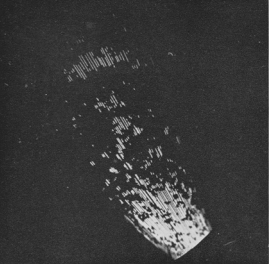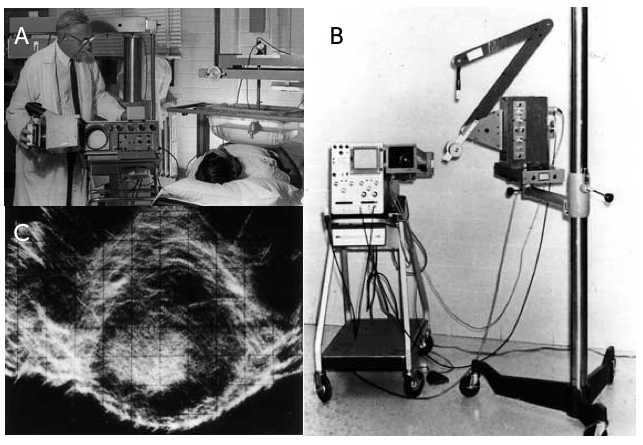The “ultrasound” moon shot
No other motivational metaphor symbolizes the willingness to strive for a higher goal better than the phrase „shoot for the moon“
Ultrasound vs. the moon mission
When the first man landed on the moon 50 years ago it was not only an incredible achievement far out of our imagination, but it also showed what can be done with human ingenuity and technology. The fact that man did land on the moon gives proof that even apparently unrealistic goals can be achieved.
But how far was ultrasound technology in the 60ies, at the time Neil Armstrong set his foot on the moon?
Ultrasound was far away from what it is now. The 2D images barely resembled true anatomy. Here is an image from 1963.

Compare this with today’s image quality:
Would you even recognize that this is the heart? While such images did not capture nearly as much attention as those sent to earth from the surface of the moon, they too were a demonstration of willingness, hard work and what we are capable of doing.
Instrumentation in the early years
The instrumentation in the 60ies didn’t look much better. The systems were bulky, and unpractical for routine clinical use. It had already been shown that breast tumors and gallstones can be detected with ultrasound. Dr. Ion Donald incorporated US into the field of OBGYN but is was not until the early 60ies that 2D Echocardiography was introduced to cardiology with the design of the very first phased array sector probes and pulsed wave Doppler.
Many areas of ultrasound such as MSK, Point of Care US or TEE were not even on the horizon.

But similar to the pioneers who worked on the “mission to the moon” the inventors of ultrasound also had a (seemingly unrealistic) vision.
“Some day ultrasound will become a major diagnostic tool.”
Today no one will argue that this mission has not been achieved.
The sonographer and the moon
But what is our role as health care professionals? In a way we are the “astronauts of ultrasound”, with the only difference that we do not risk our lives (only that of our patients if we miss the diagnosis).
But there is an important difference to the manned space missions: Only a few have been in space, but millions have already used ultrasound. In this respect ultrasound is the even greater achievement.
I believe, on a personal level all of us should have a “moon shot goal” to propel our career. At times we need to move out of the “comfort zone”. Maybe, for you it is to become an “expert astronaut” in ultrasound. This is why we chose the “moon shot” motto of our upcoming course offer. I am convinced that being competent in this area of medicine is a real “game changer”.
More to come...
Stay tuned for more on the topic of space travel and ultrasound. In the upcoming newsletters we will be looking at the role of ultrasound in space, how weightlessness affects our cardiovascular system and how you can benefit from what we learned from the mission to the moon...
If you want to get more free content, sign up for one of our free video leactures:
Sign Up

